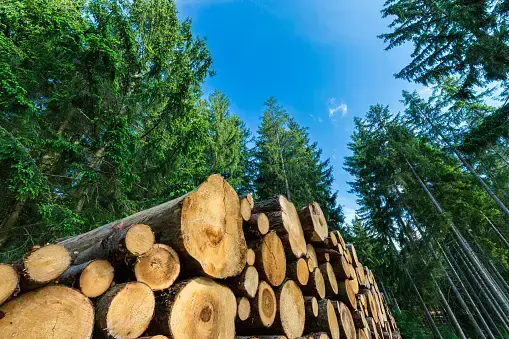2 min read
Could Asia’s Pursuit of Greener Buildings Support Future Growth of North American Lumber Exports?
 Audrey Dixon
:
Aug 15, 2024 12:00:00 AM
Audrey Dixon
:
Aug 15, 2024 12:00:00 AM

The United States and Canada have a symbiotic relationship regarding softwood lumber trade. The US heavily relies on Canadian lumber to meet its market demand, and about 85% of Canada’s softwood lumber exports go to the US.
That mutual dependency is a simple fact that seems at odds with the amount of time in the last several decades the two countries have spent fighting each other in international trade courts over duties the US imposes on Canadian softwood lumber.
An Overview of North America’s Lumber Market
With US softwood lumber production in 2023 about 28% less than US consumption and Canadian lumber production outstripping Canada’s consumption by 66%, it’s clear that the most important trading partnership is within North America.
However, no one likes to depend entirely on that one friend with whom they have a tempestuous relationship.
British Columbia (BC) accounts for about half of Canada’s annual softwood lumber production. A combination of poor markets and chronic timber supply challenges is forcing sawmills to close or cut production. In 2023, BC’s lumber output was 54% of its 2013 output. That has been part of the dynamic that, in recent years, boosted US lumber exports from Europe.
Meanwhile, periodic saber-rattling in the US, suggestive of increased protectionism, has always made it a good idea for Canada to target and help develop strong offshore export markets.
Asia’s Potential Impact on the Market
Asia, notably Japan, has historically been a strong export market for North American softwood lumber. Canada has made particularly consistent efforts to expand offshore markets. However, the struggling economies of both China and Japan, declining housing starts, and decreasing lumber imports currently present considerable challenges.
Japan also has a well-documented declining birthrate suggesting that future market opportunities in that country for North American lumber exporters might lie outside traditional residential construction. Both Japan and China are exploring the use of wood in non-residential construction projects, and the engineered wood products used to build them require good quality softwood lumber.
The Rising Interest in Tall Wood Structures
Asia’s growing interest in this sector is a little later than some other parts of the world where quality softwood lumber is a key part of the movement toward greener buildings, tall wood structures, and engineered wood projects.
The Paris Olympic Games have provided several great examples of what can be achieved with tall wood structures, such as the new Olympic Aquatics Center. The 5,000-seat venue is built mostly from wood and serves as the main architectural icon for the Summer Games as it strives to prioritize sustainability over colossal construction.
Despite the hurdles, the Paris Olympics underscore the advantages of wood construction. The Grande Halle, a remarkable wooden structure near the Eiffel Tower, showcases the flexibility and sustainability of wood. With its 44 wooden arches, it eliminates the need for indoor columns. Post-Games, this temporary gallery space can be repurposed into smaller units, highlighting the essence of sustainable and reusable architecture.
Analyze the Details with Our Market Insights Report
Working through the intricacies of demand and supply, trade policies, and growing opportunities requires comprehensive and deep insights into the workings of the global forest product markets.
Our latest Market Insights Report North American Lumber Trade Picks Up in 2024, While Asia’s Pursuit of Greener Buildings Could Support Future Export Growth provides further details into the North American lumber market such as exports, consumption, and import data along with market trends, opportunities, and challenges impacting the industry.
Our reports empower organizations with the latest data and insights on global forest products markets, enabling them to make wise decisions and drive profitable growth while supporting a low-carbon economy.





